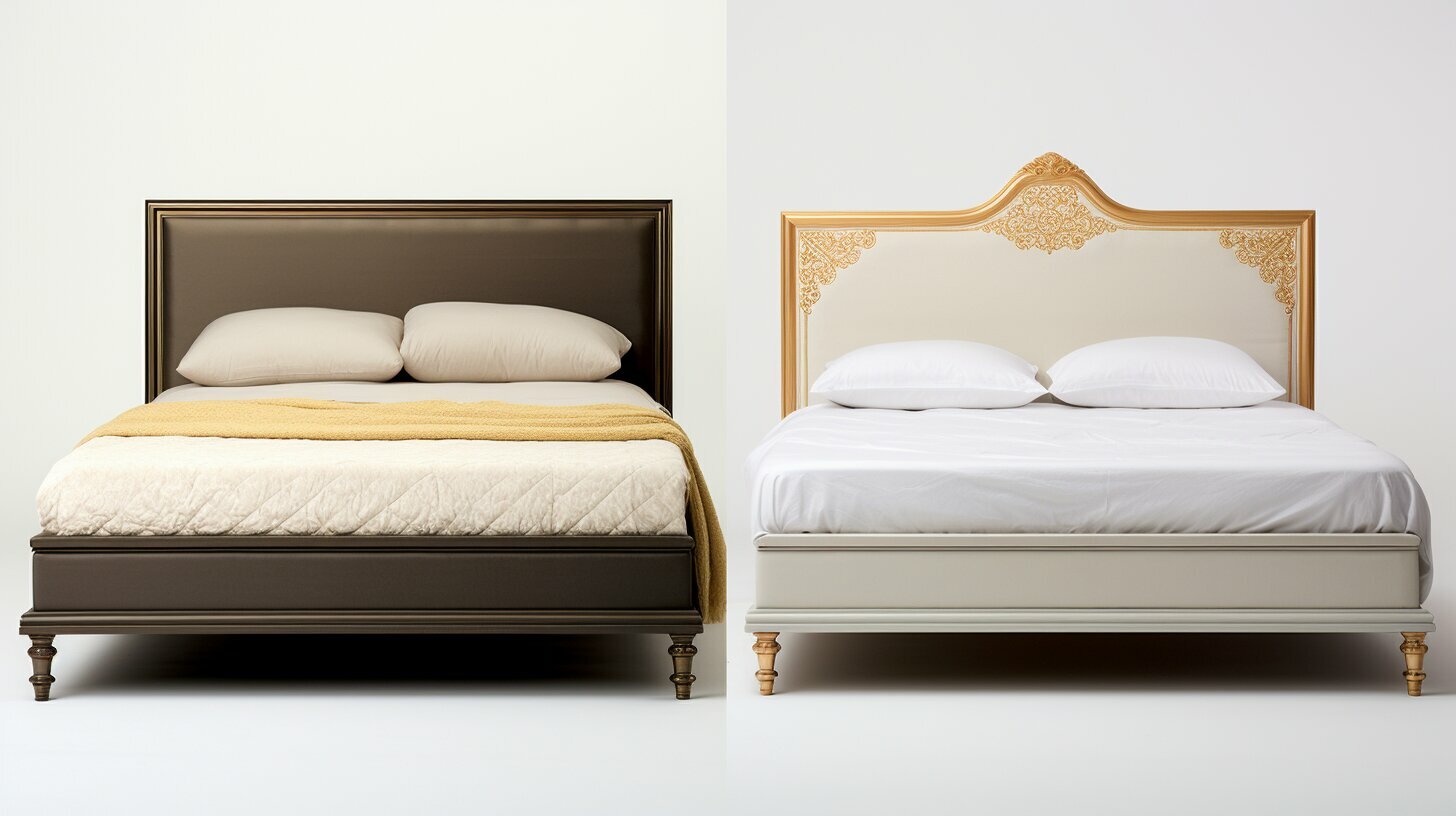
Bed Frame Materials: Best Types Compared for Durability, Style & Function
Bed frame materials influence how sturdy your bed feels, how quietly it performs, and how well it fits your style and space. This guide compares the most common bed frame materials—solid wood, metal, platform designs, and eco-friendly choices—so you can pick what lasts, looks great, and supports healthy sleep.
Key Takeaways: bed frame materials
- Solid wood is timeless and repairable, making it a long-wearing choice among bed frame materials.
- Metal frames deliver high strength-to-weight and modern style with straightforward care.
- Platform frames add storage and mattress support without a box spring, ideal for smaller rooms.
- Sustainable picks—like FSC-certified wood and recycled steel—lower impact without sacrificing quality.
- The exact phrase bed frame materials appears throughout because it’s the focus keyword of this guide.
Solid Wood: Beauty, Repairability, and Long-Term Value
Choose solid wood when you want warmth, longevity, and the option to refinish. Among bed frame materials, hardwoods balance classic looks with impressive durability.
Hardwoods such as oak, walnut, and maple resist wear better than softer woods. They’re easy to refresh with sanding and stain, extending the frame’s life for decades. If your design taste evolves, wood adapts—swap finishes, update hardware, or add a headboard later. For bedroom layout harmony that shows off wood’s natural grain, see Master the Feng Shui Principles for Bedroom Layout.
- Classic, natural aesthetic that pairs with organic bedding and cozy textures.
- Refinishable surface for life extension and style updates.
- Heavier than metal but exceptionally sturdy under load.
- Higher upfront cost, offset by longevity.
Image placement (centered at end of section):
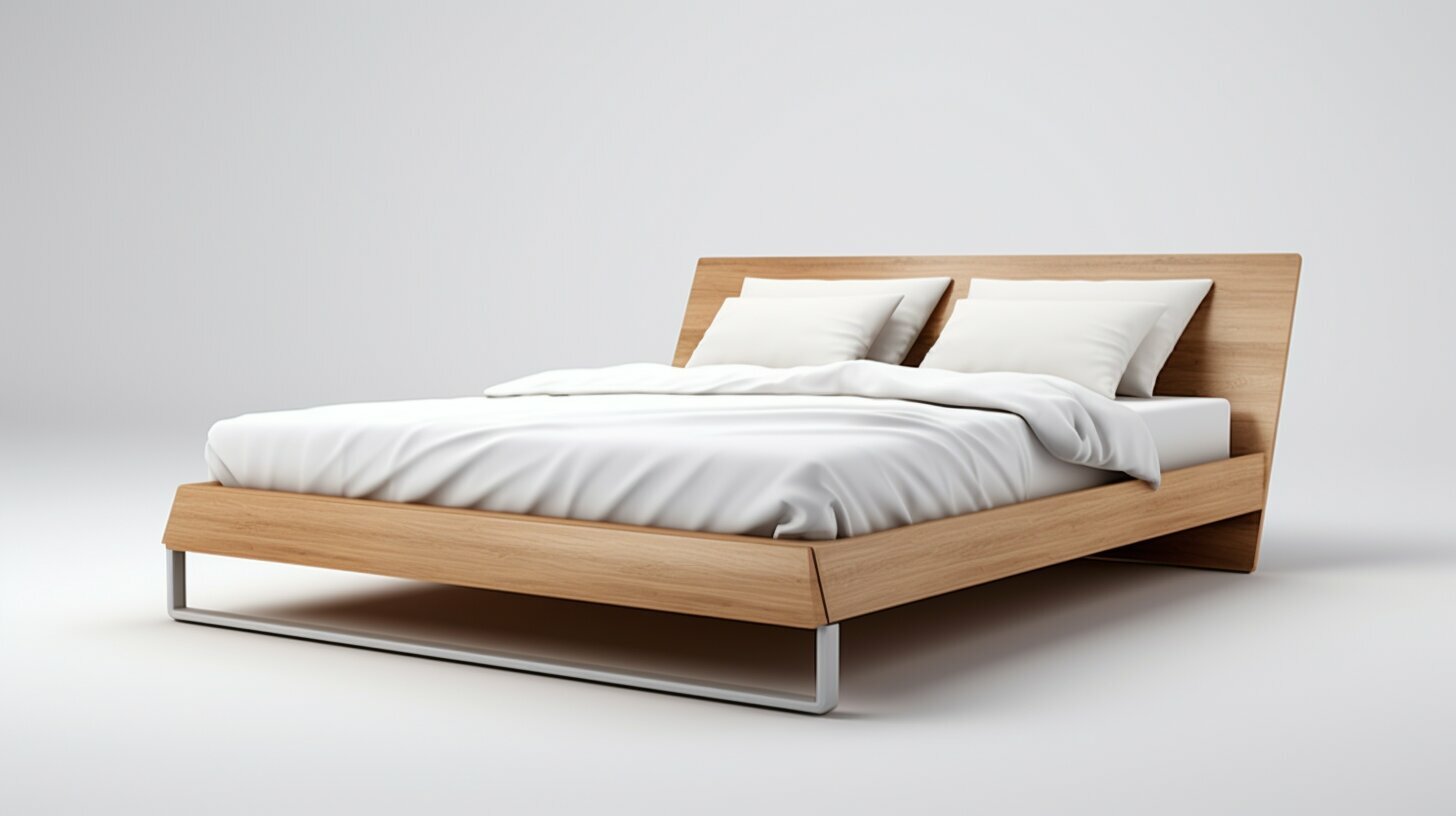
Metal Frames: Strength, Sleek Lines, and Easy Care
Pick metal if you want maximum strength with minimal visual bulk. In the universe of bed frame materials, steel often offers the best strength-to-weight ratio and crisp, modern profiles.
Quality welds and secure hardware reduce creaks, while powder-coated finishes help prevent corrosion. For a materials overview and what to expect in performance, see Sleep Foundation’s guides on best metal bed frames and box spring vs. slats (great if you’re deciding support style). Wood vs. metal also comes down to vibe: metal leans minimalist or industrial; wood leans warm and traditional.
- High weight capacity with relatively low mass.
- Simple maintenance; wipe clean and check bolts occasionally.
- Works beautifully with eco-conscious sheets and contemporary decor.
- Budget-friendly options abound; premium designs feel architectural.
Image placement (centered at end of section):
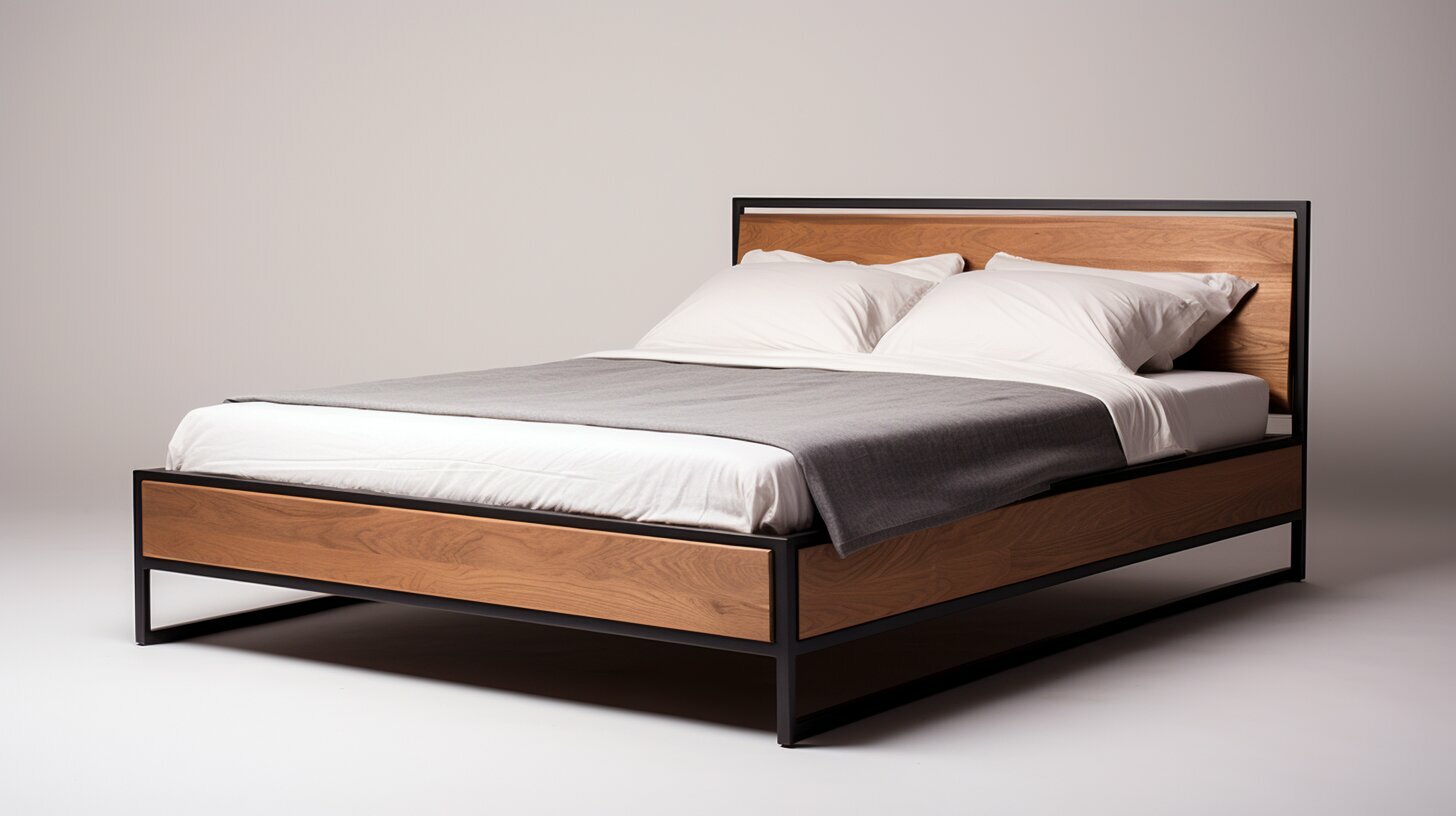
Platform Frames: Storage, Support, and a Streamlined Look
Choose a platform when you want built-in support and, often, extra storage. As bed frame materials go, platforms excel at maximizing function without a box spring.
Platforms rely on slats or a solid deck to support the mattress. That’s great for small spaces and airy, modern bedrooms. If you’re weighing platform vs. box spring, the Sleep Foundation’s primer on whether you need a box spring explains how mattress type and warranty requirements matter. For arranging a calming, uncluttered bedroom around a platform bed, explore Feng Shui Bedroom Tips for Harmony and Better Sleep.
- Room-friendly height and generous underbed storage on many models.
- Even support can improve mattress feel and motion control.
- Pairs well with sustainable bedding and neutral palettes.
- Check mattress manufacturer for slat spacing and support guidelines.
Image placement (centered at end of section):

Wood Composites and Plastics: Budget Picks with Trade-Offs
Consider these when price and convenience top your list. Among bed frame materials, MDF, particleboard, and plastics are lightweight and easy to assemble but less durable.
These frames can be practical for guest rooms or temporary housing. Expect a shorter lifespan and more visible wear. If you opt for a composite frame, keep humidity steady and avoid over-tightening fasteners. For fabric choices that complement budget frames, dive into our Bedding Materials Guide for breathability and feel.
- Lowest upfront cost with simple DIY assembly.
- Lightweight, but more prone to sag or chip over time.
- Best for light-use rooms or transitional living.
- Mind the max weight rating and hardware quality.
Image placement (centered at end of section):

Headboard or No Headboard? Form, Function, and Space
Decide based on comfort and the look you love. For most bed frame materials, headboards offer back support and a designed focal point; no-headboard keeps things minimal.
Wood headboards amplify warmth; metal adds crisp lines; upholstered softens a room and boosts coziness. Wall-mounted headboards free the frame from bulk and can include shelves or lights. For a layout that supports better rest, try Bed Positioning in Feng Shui.
Image placement (centered at end of section):
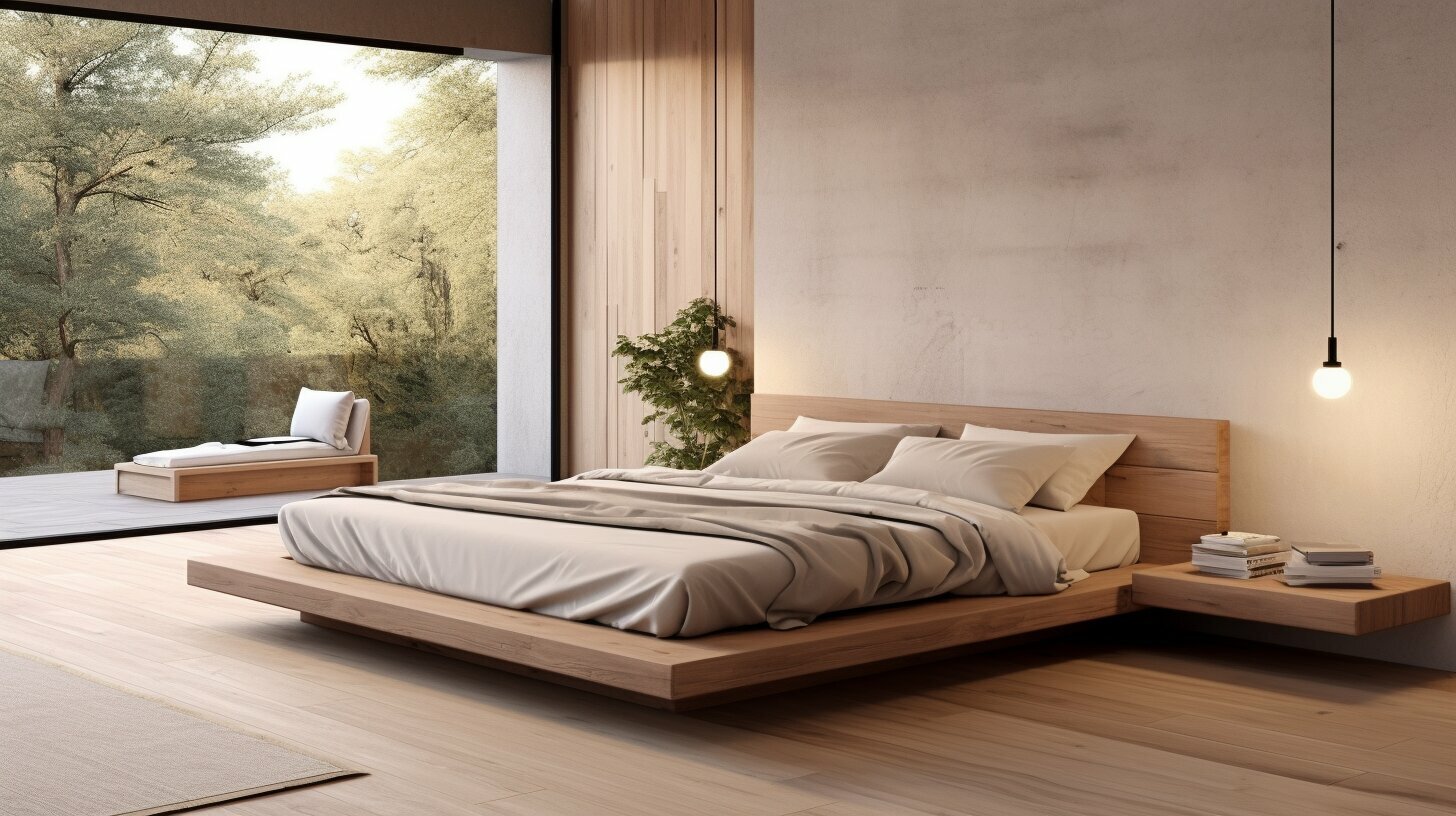
Sustainable Choices: FSC Wood, Recycled Steel, and Reclaimed Finds
Prioritize low-impact picks when you can. Eco-forward bed frame materials include FSC-certified hardwoods, recycled steel, bamboo, and reclaimed wood.
Look for third-party certification and low-VOC finishes. Recycled metal reduces landfill waste and still delivers excellent strength. If you’re building a serene, nature-leaning retreat, see Understanding Feng Shui for ways to reinforce calm with sustainable furniture and organic bedding.
- Lower environmental footprint with long service life.
- Pairs well with sustainable bedding and eco-conscious sheets.
- Refinishing and repair keep pieces out of landfills.
Image placement (centered at end of section):
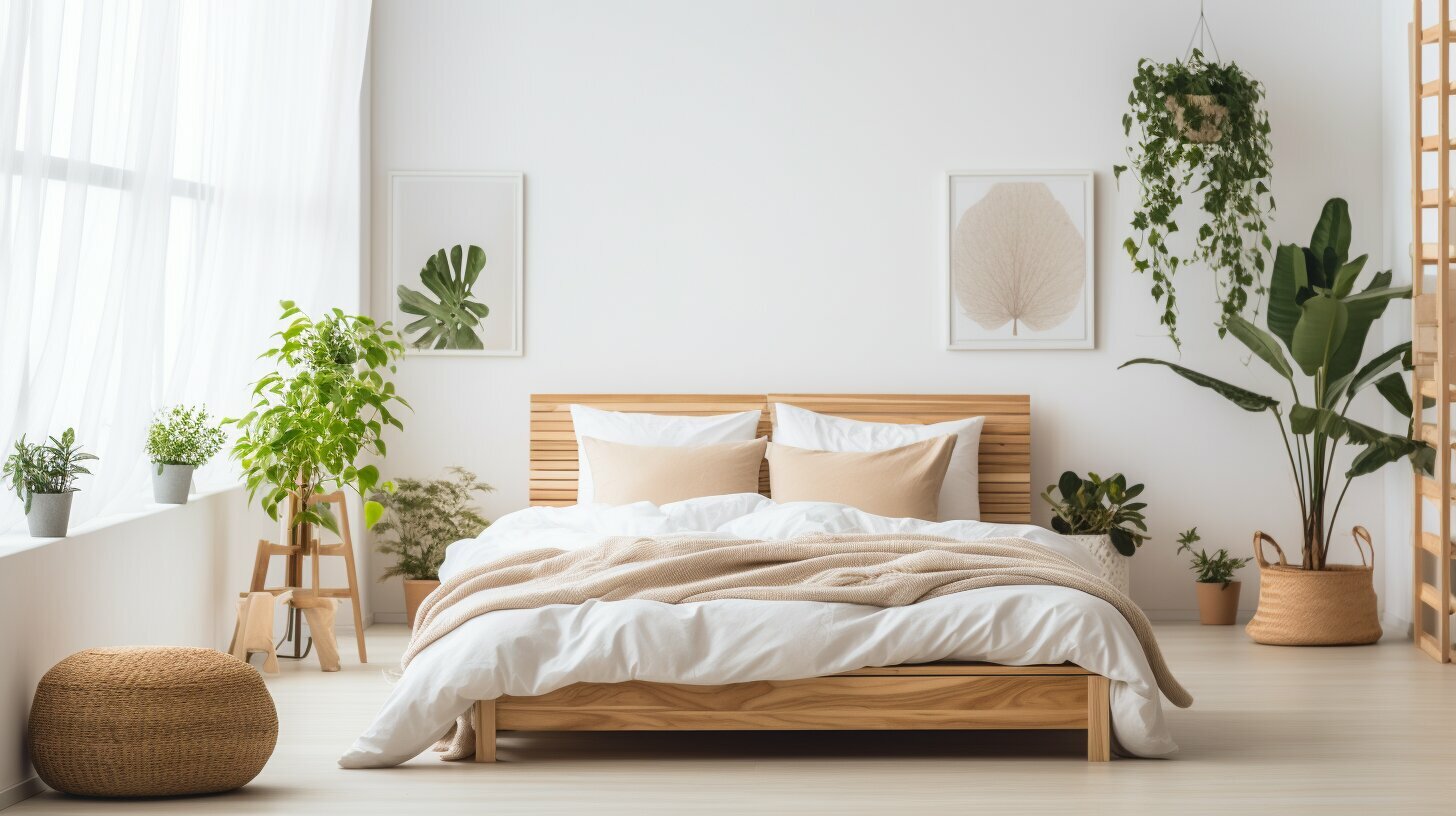
Size & Height: Matching Your Space and Mattress
Pick dimensions that fit traffic paths and storage needs. The right size and height make your chosen bed frame materials feel intentional and comfortable.
Allow at least 24–30 inches of walking clearance. Taller frames add storage and ease of getting in and out; lower profiles look modern and airy. Slat spacing should align with your mattress warranty—Sleep Foundation’s overview of slats vs. box springs clarifies which support type to choose.
Image placement (centered at end of section):
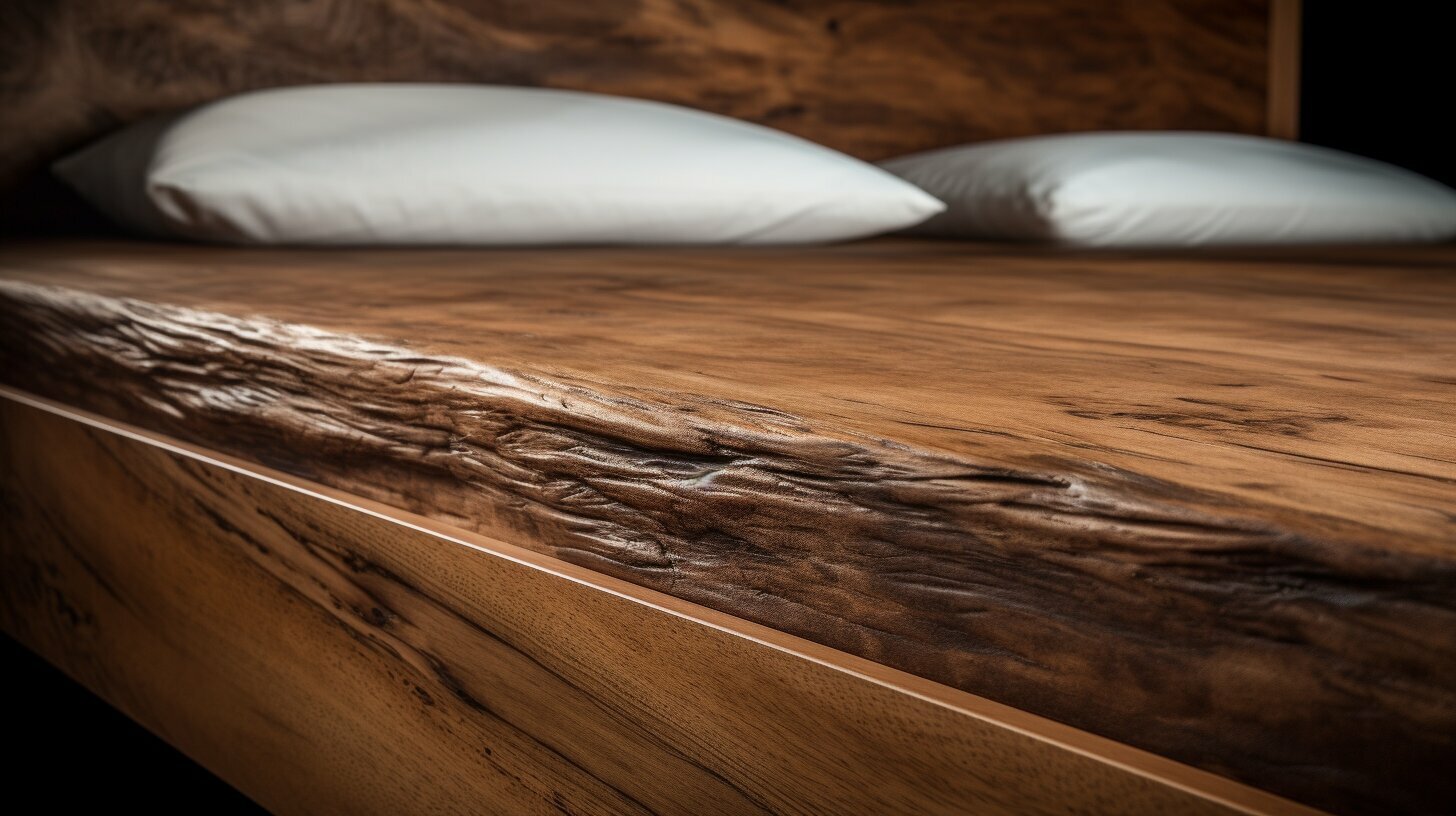
Care Tips: Keep Any Frame Quiet, Clean, and Solid
A little maintenance goes a long way. Whatever bed frame materials you choose, routine checks keep things silent and sturdy.
- Dust weekly; vacuum under the frame to reduce abrasion.
- Tighten bolts quarterly and add threadlocker if hardware loosens.
- Use felt pads to protect floors and cut vibration.
- For wood: avoid standing moisture; use coasters on side tables.
- For metal: inspect finish annually; touch up scratches to prevent rust.
Wondering whether you still need a box spring? Read Sleep Foundation’s take on Do You Need a Box Spring?—and compare support options before you buy. For tidy storage in platform designs, Better Homes & Gardens explains a practical DIY approach to under-bed storage.
Image placement (centered at end of section):
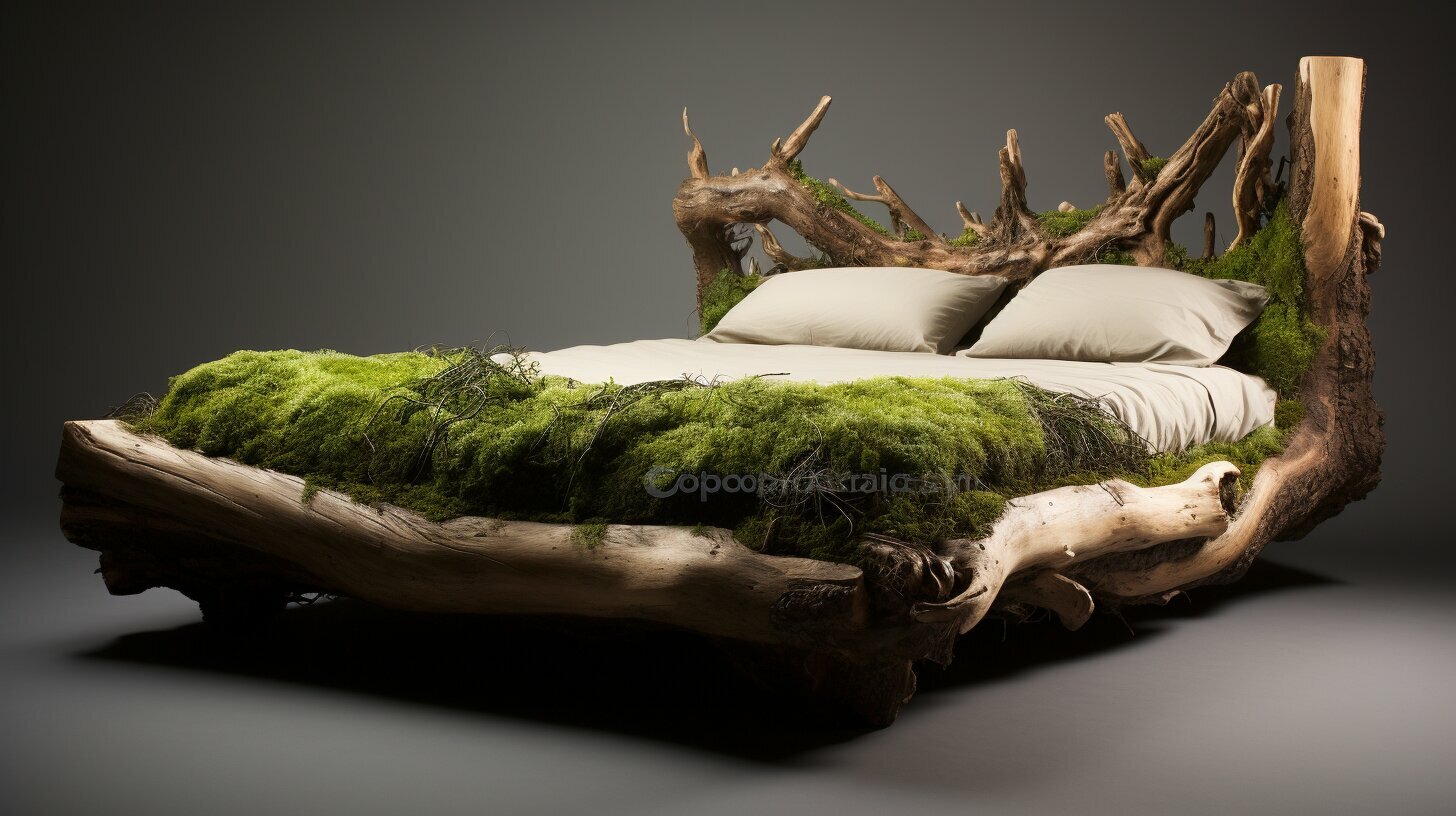
Eco-Friendly vs. Conventional: How Materials Compare
If you’re torn between sustainable and conventional bed frame materials, weigh lifetime value and finish options. Certified wood and recycled metals often rival or beat conventional picks for durability, while letting you minimize off-gassing and waste.
- Certified wood (FSC): Traceable sourcing; refinishable; classic look.
- Recycled steel: High strength; sleek profiles; stable pricing.
- Conventional composites: Lower cost; shorter lifespan; more frequent replacement.
To dial in your foundation type for your mattress, compare box springs vs. slats for airflow, bounce, and support.
Certification & Buyer’s Guide: What to Look For
Before purchasing, check that your preferred bed frame materials match your mattress maker’s support rules, confirm slat spacing, and review finish quality.
- Specs: Slat spacing (often <3″ for foam), center rail on queen+.
- Finish: Low-VOC stains/paints; sealed edges on composites.
- Assembly: Robust brackets, beefy hardware, spare fasteners.
- Warranty: Confirm coverage and required support type.
For style inspiration and frame types at a glance, Parachute’s guide to types of beds shows how materials translate into looks.
FAQ
- What is the most durable material for a bed frame?
- Hardwoods like oak and maple are top-tier bed frame materials for long service life, while steel frames deliver high strength with lighter weight.
- Are metal bed frames noisy?
- With quality welds and tight hardware, metal frames are typically quiet. Add felt pads and re-tighten bolts regularly for silent performance.
- Is a platform bed better than a box spring setup?
- It depends on mattress type and support needs. Platforms offer even support and storage; compare details in Sleep Foundation’s box spring overview and slats comparison.
- What are the most eco-friendly options?
- FSC-certified wood, recycled steel, bamboo, and reclaimed wood are eco-forward bed frame materials that don’t compromise on style or durability.
- How often should I tighten frame hardware?
- Quarterly is a good baseline; check sooner after moving, changing mattresses, or noticing motion or squeaks.
Final Thoughts: Choose Bed Frame Materials That Support Your Best Sleep
Your bed is the anchor of the room. Prioritize bed frame materials that fit your style, budget, and mattress requirements, and keep an eye on sustainability to reduce environmental impact. For a calming layout that helps your new frame shine, explore Cozy Bed Quarters’ bedroom layout guide and use the tips across this article to create a quieter, longer-lasting sleep setup.
Image placement (centered at end of section):
